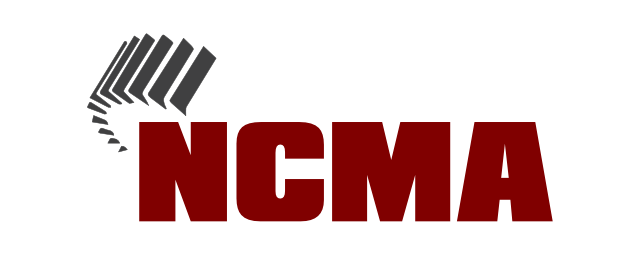EPA Final Rule for Pharmaceutical Management Published in Federal Register
Jenny Patterson, Environmental Program Consultant with the North Carolina Department of Environmental Quality (NCDEQ), Division of Waste Management (DWM) has provided a regulatory alert for the Final Rule: Management Standards for Hazardous Waste Pharmaceuticals and Amendment to the P075 Listing for Nicotine. The alert includes information about effective dates for various sections of the rule in North Carolina.
From: Patterson, Jenny <jenny.patterson@ncdenr.gov>
Sent: Friday, February 22, 2019 3:50 PM
Subject: NCDEQ Hazardous Waste Section - Regulatory Alert: Management Standards for HW Pharmaceuticals & Amendment of P075 Listing
The North Carolina Department of Environmental Quality - Hazardous Waste Section has the following regulatory alert for:
Management Standards for Hazardous Waste Pharmaceuticals and Amendment to the P075 Listing for Nicotine
Additional information on this alert is below. This email is sent to provide some basic information about this federal regulation. There is no action needed on your part at this time.
The Management Standards for Hazardous Waste Pharmaceuticals and Amendment to the P075 Listing for Nicotine final rule was printed in the Federal Register today (2/22/2019).
Here is a link to the regulation in the Federal Register: https://www.govinfo.gov/content/pkg/FR-2019-02-22/pdf/2019-01298.pdf .
When is this rule effective?
The effective date of this rule on the federal level is August 21, 2019. Two provisions of the federal rule will go into effect in North Carolina at the same time as the federal rule effective date (August 21, 2019):
- The amendment to the P075 nicotine listing (40 CFR 261.33) will go into effect on 8/21/2019. Nicotine patches, gum and lozenges will no longer be considered p-listed waste on this date. They will be considered non-hazardous.
- The prohibition on sewering of hazardous waste pharmaceuticals will go into effect on 8/21/2019. This means that hazardous waste pharmaceuticals may not be flushed down the toilet, rinsed down the drain, or otherwise disposed of in the sewer.
All other provisions of this rule (including but not limited to 40 CFR 266 Subpart P) must go through rulemaking in North Carolina to adopt the provisions. The adoption process will take approximately 9 months to 1 year after the federal rule is effective. More information on the North Carolina state rule adoption process including a schedule, the proposed rules, and public comment and hearing information will be forthcoming.
Is North Carolina required to adopt this rule?
In this rule, EPA stated: “Taken as a whole, we consider the entire new subpart P under 40 CFR part 266 entitled ‘‘Standards for the Management of Specific Hazardous Wastes and Specific Types of Hazardous Waste Management Facilities’’ (sections VIII–XVII of this preamble) to be more stringent than the current federal standards. Therefore, authorized states will be required to modify their programs to adopt these revisions.” Additionally, when adopted and effective in North Carolina, applicable facilities must comply with the new 40 CFR 266 Subpart P provisions (the rule is not optional unless the facility is a very small quantity generator).
General overview of the rule and applicability:
This final federal rule adds regulations for the management of hazardous waste pharmaceuticals by healthcare facilities and reverse distributors. Healthcare facilities (for both humans and animals that generate, accumulate, or otherwise handle hazardous waste pharmaceuticals) and reverse distributors (engaged in the management of prescription hazardous waste pharmaceuticals) will manage their hazardous waste pharmaceuticals under this new set of sector-specific standards in lieu of the existing hazardous waste generator regulations. Potentially affected entities include (but are not limited to): drug wholesalers, pharmacies and drug stores (including supermarkets, warehouse clubs and supercenters), veterinary services, physicians’ offices, dentists’ offices, other health practitioners (e.g., chiropractors), outpatient care centers, other ambulatory health care services, hospitals, nursing care facilities (e.g., assisted living facilities, nursing homes), continuing care retirement; communities (e.g., assisted living facilities with on-site nursing facilities), and reverse distributors. The final rule provides a list of North American Industry Classification System (NAICS) codes for the potentially affected entities, but also indicates the list is intended to be a guide and is not exhaustive. Other hazardous waste management requirements (40 CFR 262, 273, etc.,) may also apply to the healthcare facility or reverse distributor if non-pharmaceutical hazardous wastes are generated.
The new federal rule prohibits the disposal of hazardous waste pharmaceuticals down the drain and eliminates the dual regulation of RCRA hazardous waste pharmaceuticals that are also Drug Enforcement Administration (DEA) controlled substances. The new rules also maintain the household hazardous waste exemption for pharmaceuticals collected during pharmaceutical takeback programs and events, while ensuring their proper disposal. The rule establishes a policy on the regulatory status of unsold retail items that are not pharmaceuticals and are managed via reverse logistics.



